Introduction, Overview and Theories
by Barbara Horejs,
3 October 2007
| Published | October 3, 2007 |
| Type | Uncategorized |

Part of a KREAS project
Introduction, Overview and Theories
by Barbara Horejs,
3 October 2007
| Published | October 3, 2007 |
| Type | Uncategorized |

What is “Mattpainted Pottery”?
The term mattpainted pottery was first used by A. Furtwängler and G. Loeschke in their classification of pottery from Grave Circle A in Mycenae (Furtwängler and Loeschke 1879, 2; Idem 1886, 54 ff.). It quickly gained wide use in research as the designation for a category of pottery with dull, lustreless, that is, ‘matt’ painting. 1 In the course of time different chronological and technological appearances accumulated under this very flexible nomen. The spectrum ranges from the wheel-made and handmade polychrome ware of Middle Helladic southern Greece, to handmade pottery of the Late Bronze Age – with bichrome and monochrome ware in West Macedonia and monochrome ware in Central Macedonia – and the Iron Age phenomenon of mattpainted handmade pottery in Epirus and Albania.
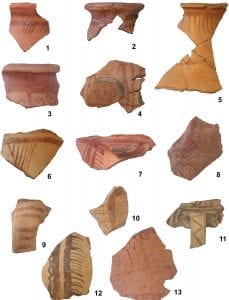 Fig. 03. Mattpainted Pottery from the Chalkidiki, Prehistoric Olynthos.
4, 11. layer 7 5. layer 6 1, 13. layer 5 12. layer 4 6, 7, 9. layer 3+4 2. layer 3+0 3. layer 2+3 8. layer 2 10. layer 1+0
Fig. 03. Mattpainted Pottery from the Chalkidiki, Prehistoric Olynthos.
4, 11. layer 7 5. layer 6 1, 13. layer 5 12. layer 4 6, 7, 9. layer 3+4 2. layer 3+0 3. layer 2+3 8. layer 2 10. layer 1+0
 Fig. 04. Mattpainted fragments from the region of the Golf of Volos to the plain of Langadas.
1. Chortiatis (after Grammenos et al. 1997, pl. 5,8) 2–4, 7. Gona (after Rey 1916, 276 fig. 11) 5. Gona (after Heurtley 1939, 224 nr. 450) 6. Liti (after ibid., 219 fig. 90,c).
Fig. 04. Mattpainted fragments from the region of the Golf of Volos to the plain of Langadas.
1. Chortiatis (after Grammenos et al. 1997, pl. 5,8) 2–4, 7. Gona (after Rey 1916, 276 fig. 11) 5. Gona (after Heurtley 1939, 224 nr. 450) 6. Liti (after ibid., 219 fig. 90,c).
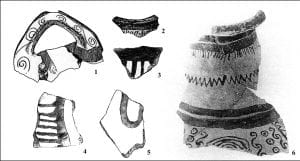 Fig. 05. Mattpainted fragments from the region of the Golf of Volos to the plain of Langadas.
1–2. Perivolaki (after Heurtley 1928–29, 131 fig. 16, a.c) 3–5. Mesimeriani Toumba (after Grammenos and Kotsos 2002, 220 pl. 34,δ.ε.η) 6. Toumba Thessaloniki (after Andreou and Kotsakis 1996, 387 fig. 1).
Fig. 05. Mattpainted fragments from the region of the Golf of Volos to the plain of Langadas.
1–2. Perivolaki (after Heurtley 1928–29, 131 fig. 16, a.c) 3–5. Mesimeriani Toumba (after Grammenos and Kotsos 2002, 220 pl. 34,δ.ε.η) 6. Toumba Thessaloniki (after Andreou and Kotsakis 1996, 387 fig. 1).
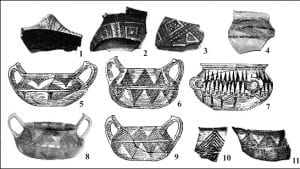 Fig. 06. Mattpainted pottery from the lower Axios valley.
1–3. Axiochori (after Heurtley 1926–27, pl. 13a,3.12; 13b,4) 4. Vardarski Rid (after Mitrevski 2003, 71 fig. 6) 5. Limnotopos (after Heurtley 1939, 217 nr. 413) 6–8. Kalindria (after ibid., 218 nr. 422; 423; Koukouli-Chrysanthaki 1994, 55 fig. 58) 9–11. Tsautsitsa (after Heurtley 1939, 219 fig. 89,j.k; 220 nr. 434).
Fig. 06. Mattpainted pottery from the lower Axios valley.
1–3. Axiochori (after Heurtley 1926–27, pl. 13a,3.12; 13b,4) 4. Vardarski Rid (after Mitrevski 2003, 71 fig. 6) 5. Limnotopos (after Heurtley 1939, 217 nr. 413) 6–8. Kalindria (after ibid., 218 nr. 422; 423; Koukouli-Chrysanthaki 1994, 55 fig. 58) 9–11. Tsautsitsa (after Heurtley 1939, 219 fig. 89,j.k; 220 nr. 434).
 Fig. 07. Examples of mattpainted pottery from Kastanas in different layers („Schicht“)
(after Hochstetter 1984, pls. 6,1.4; 11,1.4–6; 22,2.5; 24,4; 29,12; 31,5; 33,7; 46,4.5; 51,3; 54,1; 56,5; 93,5).
Fig. 07. Examples of mattpainted pottery from Kastanas in different layers („Schicht“)
(after Hochstetter 1984, pls. 6,1.4; 11,1.4–6; 22,2.5; 24,4; 29,12; 31,5; 33,7; 46,4.5; 51,3; 54,1; 56,5; 93,5).
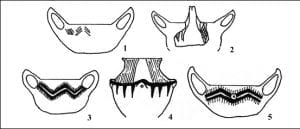 Fig. 08. Mattpainted pots from the region of the middle Vardar valley. 1.
Vodovrati 2. Stobi 3–4. Ulanci 5. Krivi Dol (after Mitrevski 1997, 50 fig. 12,2.4–7).
Fig. 08. Mattpainted pots from the region of the middle Vardar valley. 1.
Vodovrati 2. Stobi 3–4. Ulanci 5. Krivi Dol (after Mitrevski 1997, 50 fig. 12,2.4–7).
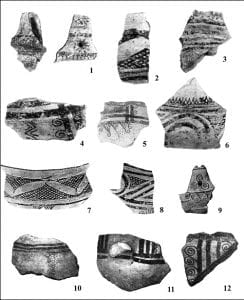 Fig. 09. Mattpainted pottery from the Iannitsa basin.
1–6. Angelochori (after Stefani 1994, 130 fig. 3–4; Meroussis and Stefani 1997, pl. 152,a.d.e) 7–9. Chadsinota (after Allamani 1983, pl. 123,b–d) 10–12. Episkopi, Toumba Slata (after Vokotopoulou 1986, pl. 337b).
Fig. 09. Mattpainted pottery from the Iannitsa basin.
1–6. Angelochori (after Stefani 1994, 130 fig. 3–4; Meroussis and Stefani 1997, pl. 152,a.d.e) 7–9. Chadsinota (after Allamani 1983, pl. 123,b–d) 10–12. Episkopi, Toumba Slata (after Vokotopoulou 1986, pl. 337b).
 Fig. 10. Mattpainted pottery from Ano Komi
(after Karamitrou-Mentessidi 1998, 445 fig. 4; 447 fig. 5; 449 fig. 6).
Fig. 10. Mattpainted pottery from Ano Komi
(after Karamitrou-Mentessidi 1998, 445 fig. 4; 447 fig. 5; 449 fig. 6).
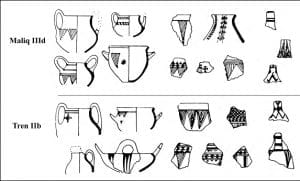 Fig. 11. Late Bronze Age mattpainted pottery from Maliq IIId und Tren IIb
(after Bodinaku 1989, 64).
Fig. 11. Late Bronze Age mattpainted pottery from Maliq IIId und Tren IIb
(after Bodinaku 1989, 64).
Significance and interpretation
The importance of mattpainted pottery lies foremost in the key role assigned to it by archaeologists regarding the question of ethnic movements in central and northern Greece during the Bronze Age.
Hence, R.J. Buck (1964, 280) saw the emergence of mattpainted pottery as evidence of an immigrating people known at the time as the “Minyans”, and F. Matz linked their derivation with the essential ethnogenesis of the Greeks themselves (1962, 162). 2 Similarly, the derivation of mattpainted pottery is seen in close association with the “Illyrian people” in Albania. Thus, Prendi explains the appearance of mattpainted pottery in the Devoll valley as the continuous indigenous development of the Illyrians, which would predate that in Macedonia and Epirus and – emanating from Albania – would have influenced these regions. 3 N.G.L. Hammond (1967, 390), on the contrary, connects the dissemination of mattpainted pottery with immigration of the Dorians and postulates a movement of transhumant shepherds from Epirus through Macedonia. J. Vokotopoulou (1986, 255 ff.) views Late Bronze Age mattpainted pottery in Macedonia as the result of a migration of “Macedonian tribes” from central Greece to the north and northeast.
The merging of the many different geographical and chronological categories of pottery in one term has led to confusion, on the one hand, while, on the other, it implies an intentional or unintentional contextual association of all. De facto not every piece of pottery with dull, lustreless, i.e. matt painting can be assigned automatically to the category of mattpainted pottery. And in any case, it should be distinguishable from mattpainted pottery through the terminology. 4
Mattpainted pottery in the Late Bronze Age
In the Late Bronze Age the distribution of mattpainted pottery extends from Kamenska Čuka in Bulgaria in the north to the Devoll valley of Albania in the west, and to the Argolis and Laconia in the south of Greece (fig. 1). An analysis of the similarities and differences in this pottery reveals that the existence of microregional groups which can be defined on the basis of their specific characteristics. The determining factors thereby are: shape, decoration, style of decoration, date and duration.
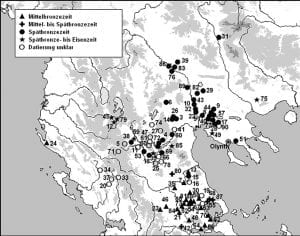
Fig. 1. Distribution of Mattpainted Pottery in Middle and Late Bronze Ages.
1. Äani 2. Aidniotiki Magula 3. Angelochori 4. Ano Komi 5. Apidea 6. Apsalos 7. Argissa Magula 8. Asprovrisi 9. Assiros 10. Axiochori 11. Axiokastro 12. Barç 13. Bounarbaşi 14. Chadsinota 15. Chasambali 16. Chasan Tartar 17. Chortiatis 18. Chromio 19. Delichani 20. Dodoni 21. Domokos-Kastri 22. Dourmousli 23. Dogatsi 24. Dukat 25. Elati 26. Episkopi 27. Exochi 28. Gona 29. Kalindria 30. Kalo Nero 31. Kamenska Čuka 32. Kastanas 33. Kastritsa 34. Kato Pedina 35. Koutsochero 36. Kranidia 37. Kria 38. Krioneri 39. Krivi Dol 40. Lembet 41. Levkopetra 42. Lianokladi 43. Limnotopos 44. Liti 45. Maliq 46. Makria Magula 47. Mavropigi 48. Melitäa 49. Mesimeriani Toumba 50. Metamorfosi 51. Molyvopyrgos 52. Mylos 53. Paläokastro (Glas) 54. Paläokastro (Derengli) 55. Pevkakia Magula 56. Pelasgia 57. Perivolaki 58. Pherä 59. Platania 60. Polimylos 61. Pontokomi 62. Pteleon 63. Pyrasos 64. Raches 65. Revmatia-Paliambela 66. Rimnio 67. Rini 68. Sesklo 69. Servia 70. Sourpi-Magula 71. Sousouli 72. Sparto 73. Spilia (Pharsala) 74. Spilia (Eklisaki) 75. Stathmos Angistas 76. Stobi 77. Toumba Thessaloniki 78. Tranovalto 79. Tren 80. Trikala 81. Tsangli 82. Tsautsitsa 83. Ulanci 84. Vandali 85. Velvendo 86. Vodovrati 87. Volos (Iolkos) 88. Vrysi Platania 89. Vardarski Rid 90. Thermi A 91. Anchialos
A total of eight different stylistic groups in Late Bronze Age mattpainted pottery have been discerned in Greece and the Balkans thus far, which can be divided into the following microregions (fig. 2) 5: the Chalkidiki (fig. 3), the Gulf of Thessaloniki to Langadas basin (fig. 4-5), the lower Axios valley (fig. 6-7), the middle Axios- or Vardar river valley (fig. 8), the Iannitsa basin 6 (fig. 9), the region along the Aliakmonas river 7 (fig. 10), the Devoll valley (fig. 11) and finally central Greece (fig. 12).

1. Chalkidki 2. Golf von Thessaloniki bis Ebene von Langadas 3. Unterer Axios 4. Mittlerer Vardar 5. Becken von Iannitsa 6. Region entlang des Alikamon 7. Becken von Korcë 8. Golf von Volos bis Sperchiostal (see list of sites of fig. 1)
Proceeding from the present state of publications, groups 1 (Chalkidiki) and 8 (Gulf of Volos to the Sperchios valley) represent the oldest secure evidence of mattpainted pottery in the Late Bronze Age. This category appears at the Toumba of Olynthos (Prehistoric Olynthos) for the first time in layers 8 and 7, that is, during the period LH I to LH IIA. 8 At sites of group 8 and possibly group 2 (Toumba Thessaloniki) the Late Bronze Age mattpainted pottery can be linked directly and without interruption to the Middle Bronze Age.
Group 3 likewise begins during the early Late Bronze Age, when basing upon the results from Kastanas. Mattpainted pottery is first evidenced there in layer 18, which must be dated prior to LH IIIA (Jung 2002a, 218 f.) and – in view of the local unpainted pottery – can be correlated with layers 7 and 6 in the Toumba of Olynthos (Horejs, in press). Information as to the time at which mattpainted pottery begins in group 5 must await the final publication of finds in Angelochori 9; however, the analogies present there together with those in Kastanas and Prehistoric Olynthos point towards an early beginning of mattpainted pottery. Group 6 along the Aliakmonas river first appears in LH IIIA late; group 4 on the middle Vardar valley likewise dates to a developed phase of the Late Bronze Age. The beginning of mattpainted pottery in group 7 cannot be determined as yet.
The derivation of mattpainted pottery in Macedonia
The problem of the origin of Late Bronze Age mattpainted pottery has remained unsolved since the contrary theories of A. Hochstetter (1982) and J. Vokotopoulou (1986, 255 ff.) appeared c. twenty years ago. In the following both theories and their essential points will be discussed briefly.
Hochstetter (1982) explains Late Bronze Age mattpainted pottery as an imitation of the Mycenaean pottery in southern Greece and bases this view upon the following arguments.
1. The chronological dissolution of mattpainted pottery by the local production of Mycenaean pottery
2. The absence of direct chronological ties to Middle Helladic mattpainted pottery in central and southern Greece
3. The lack of similarities between Late Bronze Age mattpainted motifs and those of Middle Helladic motifs
4. The presence of many similarities between Late Bronze Age mattpainted motifs and Mycenaean ornamentation
5. The appearance of mattpainted pottery on the whole with its light coloured clay and fine brush painting should be understood as an imitation of Mycenaean pottery.
Vokotopoulou (1986) traces Late Bronze Age mattpainted pottery in northern Greece directly to its Middle Helladic forerunners in central and southern Greece, who entered Macedonia as migrating tribes. Her principle arguments are:
1. Late Bronze Age mattpainted pottery in Macedonia does not display any ties to local pottery repertories.
2. The category mattpainted pottery appears prior to the first Mycenaean imports in the region.
3. Similarities between mattpainted and Middle Helladic motifs are present.
The ensuing contemplations on the genesis of Late Bronze Age mattpainted wares commence with evidence of the chronologically oldest groups. This is found in the regions of the Chalkidiki (group 1) and the Gulf of Volos to Sperchios valley (group 8). A further coastal site with group 2 is found in Toumba Thessaloniki, where this category already appears at the beginning of the Late Bronze Age.
In the Thessalian group 8 a continuous and uninterrupted development of Middle Helladic mattpainted ware is attested in the Late Bronze Age, until LH II at least, with clear links to older prototypes. In turn, this Thessalian group reflects numerous connections with the oldest mattpainted pottery in the Chalkidiki, which are definitely datable to LH I to LH IIA (Horejs 2007; eadem, in press). The correspondences extend beyond simple similarities in ornamentation and apply to vessel shapes as well as compositions in decoration, the entire structure of patterns and its syntax as well. Here without any doubt a direct link between the earlier Late Bronze Age mattpainted wares in northern Greece to the Middle Helladic tradition in Thessaly is manifest.
Ties between Late Bronze Age motifs and Middle Helladic mattpainted pottery are found foremost in Thessaly. 10 Precisely the ornaments that Hochstetter (1982, 212 fig. 6) draws from the canon of Mycenaean patterns were already applied to Middle Helladic mattpainted pottery (fig. 13). The standing triangle with simple hatching, cross-hatching or in concentric order, aligned in a row as the main motif is widespread and attested, for example, on Middle Helladic vessels 11 in Lianokladi (Wace and Thompson 1912, 182 fig. 132,c; 126,g.h), Aidniotiki Magula (Maran 1992, pl. 144,7), Pefkakia phases 6 late and 7 (Ibid. pl. 107,12; 125,1) as well as Asine (Nordquist 1987, 167 fig. 34). Likewise, the standing triangle with a spiral as end ornament was known long before Mycenaean pottery, 12 as for example in Lianokladi (Maran 1992, pl. 147,2). The stemmed spiral, defined as characteristic of LH IIIB, is well-known on Middle Bronze Age vessels in Lianokladi (Wace and Thompson 1912, 184 fig. 131,a), Melitäa (Bakalaki 1959, 89 fig. 13; 91 fig. 15) as well as Grave В in Grave Circles B in Mycenae (Mylonas 1972, pl. 27,γ). Similarly, the so-called “starfish” motif, which Hochstetter dates to LH II by means of comparisons with Mycenaean pottery (Hochstetter 1982, 212 fig. 6), finds older parallels, for example in Grave Г in Grave Circle B in Mycenae (Mylonas 1972, pl. 50,γ). The same applies to the spiral rapport, 13 the hatched lozenge 14 and the hanging concentric garlands, 15 all of which can be observed on mattpainted vases of the Middle Bronze Age and long before Mycenaean pottery.
Accordingly and without exception, all of the motifs that Hochstetter traces to Mycenaean pottery have older forerunners in mattpainting traditions of the Middle Bronze Age (fig. 13). This also pertains to motifs of hanging triangles aligned in a row and wavy bands in different variations that are actually far more frequent in early Late Bronze Age mattpainted pottery. Thus, we find evidence of the first (hanging triangles) in Eutresis (Goldman 1931, 171 fig. 240,4) and Asine (Nordquist 1987, 172 fig. 50,5). Examples of the use of the second (wavy bands) are present in Bounarbaşi (Maran 1992, pl. 145,15) and Eutresis 16. Even exact analogies in ornamental composition in combination with wavy bands can be observed, for example the double-bladed saw with a central band from Grave Γ in Grave Circle B in Mycenae (Mylonas 1972, pl. 114,β), which is the same as the pattern on a globular kantharos in Prehistoric Olynthos (fig. 14). Finally, the characteristic motif on Late Bronze Age vessels consisting of vertical and horizontal fringed bands is likewise already present in mattpainted vessels. 17
The similarity between the entire appearance of Late Bronze Age mattpainted and early Mycenaean pottery as postulated by Hochstetter is, in my opinion, problematic. The differences in the whole compositional syntax 18 can be best determined in the examples of early Mycenaean pottery found in a settlement in the vicinity of Prehistoric Olynthos and Kastanas. Located on the Sithonia peninsula of the Chalkidiki, Toroni is the only settlement that has yielded a larger amount of Mycenaean pottery that can be dated to LH I to LH II (Cambitoglou and Papadopoulos 1991, fig. 22–23), whose decoration, ornaments and composition do not compare with Late Bronze Age mattpainted pottery. The argument of the light coloured surface with fine dark painting for mattpainted vases could just as well apply to an imitation of “dark on light-ware”, the “lustrous decorated ware” or many other coeval categories of painted pottery in the Aegean.
Finally, there is still the question regarding a chronological and contextual dissolution of mattpainted pottery by Mycenaean local production, as can be observed in Kastanas. In Toumba Olynthos mattpainted pottery is not replaced by Mycenaean pottery; instead, it appears alongside the other starting with layer 7, and possibly they are used together in a mixed set as of layer 4 (Cp. Horejs, in press). Similarly, Toumba Thessaloniki and the settlement at Apsalos also display continued use of mattpainted ware in great numbers long after Mycenaean pottery appears there for the first time. Lastly, the necropolises along the Aliakmonas river attest the coeval use of mattpainted pottery and Mycenaean vessels together as a mixed set, which clearly speaks against a contextual dissolution of mattpainted pottery by Mycenaean pottery. Contrary to Vokotopoulou’s opinion, there does indeed seem to have been a strong relationship between Macedonian mattpainted pottery and local tradition, which is clearly expressed in the choice of vessel forms. The majority of the spectrum of mattpainted vessels was adopted directly from the local Late Bronze Age pottery (Cp. Horejs, in press), a fact that in my opinion contradicts her theory of immigration.
Conclusions
Based upon vase shape, decoration and decorative style, Late Bronze Age mattpainted pottery in the Northern Aegean can be divided into a total of eight microregional groups, of which the regions of the Chalkidiki, the Gulf of Volos to the Sperchios valley and possibly the lower Axios river are the oldest of the groups and date to the early Late Bronze Age. A direct chronological and geographical link to the older Middle Helladic mattpainted pottery is confirmed by group 8 in Thessaly. The characteristic main motifs as well as the numerous, but less frequent ornaments can be traced singly or in combinations of patterns to Middle Bronze Age mattpainted wares (Horejs 2003). Contact to central and southern Greece with accompanying imports and imitations of all categories of pottery is attested by Minyan ware and Minyan imitations, at least in Prehistoric Olynthos, in the earlier layers 14 to 10 (Horejs 2007).
In my opinion, mattpainted pottery should be seen in the association, in which after the disappearance of the categories of Minyan imitations mattpainted ware was taken into the local repertory in Macedonia and adapted to local traditions. Late Bronze Age mattpainted pottery in the north derives from Middle Helladic mattpainted pottery technologically, morphologically and through its ornament and compositions of patterns. As a possible contact zone the Gulf of Volos comes into view, where the most numerous analogies can be observed. The oldest Macedonian mattpainted pottery is, thus, not a product of a people who migrated from central Greece to Macedonia, but rather the result of a long, extant and apparently continued contact with regions in central and southern Greece. Techniques, ornaments and compositions were adopted and transferred to local traditional pottery. And so a specific north Greek category of pottery emerged at the beginning of the Late Bronze Age, whose origin is located in Middle Helladic central and southern Greece.
Bibliography
Allamani, V. 1983: “Καμάρα Ναούσης. Τούμπα Χατζηνώτα.“ ArchDel 38 B’2:304–305.
Andreou, St., and K. Kotsakis. 1991: “Η ανασκαφή στην Τούμπα Θεσσαλονίκης το 1991.“ To Archaiologiko Ergo sti Makedonia kai sti Thraki 5:209–219.
Andreou, St., and K. Kotsakis. 1996: “Η προϊστορική Τούμπα της Θεσσαλονίκης. Παλιά και νέα ερωτήματα.“ To Archaiologiko Ergo sti Makedonia kai sti Thraki 10A:369–387.
Bakalaki, G., 1959: “Προϊστορικός συνοικισμός πάρα τη Μελιταία.“ Thessalika 2:80–91.
Bodinaku, N. 1989: “Rreth kronologjisë së qeramikës së pikturuar mat të kohës së Vonë të Bronzit dhe të Hekurit.” Iliria 19, 1:53–65.
Bodinaku, N. 1990: “Sur l’origine et les porteurs de la céramique peinte mate de l’Âge du Bronze Récent et du Fer.” Iliria 20, 2:79–95.
Buck, R.J. 1964: “Middle Helladic Mattpainted Pottery.” Hesperia 33:231–313.
Bulle, H. 1907: Orchomenos I. Die älteren Ansiedlungsschichten. München: Verlag der Bayerischen Akademie der Wissenschaften.
Cambitoglou, A., and J.K. Papadopoulos. 1988: “Excavations at Toroni 1986 : A Preliminary Report.” MeditArch 1:180–217.
Cambitoglou, A., and J.K. Papadopoulos. 1990: “Excavations at Toroni 1988.” Mediterranean Archaeology 3: 93–142.
Cambitoglou, A., and J.K. Papadopoulos. 1991: „Excavations at Toroni 1989.“ MeditArch 4:147–171.
Cambitoglou, A., J.K. Papadopoulos, and O. Tudor Jones, eds. 2001. Torone I. The Excavations of 1975, 1976 und 1978. Athen: Archaeological Society at Athens.
Chrysostomou, A., A. Georgiadou, Ch. Pouloukidou and A. Prokopidou 2000: “Ανασκαφικές έρευνες στην επαρχιακή οδό Αψάλου-Αριδαίας κατά το 2000.” Arch. Ergo Makedonia kai Thraki 14:491–504.
Furtwängler, A. and G. Loeschke 1879: Mykenische Thongefäße. Berlin.
Furtwängler, A. and G. Loeschke 1886: Mykenische Vasen. Vorhellenische Thongefäße aus dem Gebiete des Mittelmeeres. Berlin.
Goldman, H. 1931. Excavations at Eutresis in Boeotia. Cambridge: Harvard University Press.
Hammond, N.G.L. 1967: Epirus: the Geography, the Ancient Remains, the History and the Topography of Epirus and Adjacent Areas. Oxford.
Grammenos, D.V., M. Besios and S. Kotsos 1997: Από τους προϊστορικούς οικισμούς της Κεντρικής Μακεδονίας. Thessaloniki.
Grammenos, D.V. and S. Kotsos 2002: Ανασκαφή στον προϊστορικό οικισμό „Μεσιμεριανή Τούμπα“ Τριλοφού Ν. Θεσσαλονικής. Thessaloniki.
Hanschmann, E. 1981: Die deutschen Ausgrabungen auf der Argissa-Magula in Thessalien IV. Die mittlere Bronzezeit. Beitr. ur- u. frühgesch. Arch. Mittelmeer-Kulturraum 23. Bonn.
Hänsel, B. 1989. Kastanas. Die Grabung und der Baubefund. Prähistorische Archäologie in Südosteuropa 7. Berlin: Volker Spiess.
Heurtley, W.A. 1925-26: “Report on excavations at the Toumba and Tables of Vardaróftsa, Macedonia, 1925, 1926.” BSA 27:1–66.
Heurtley, W.A. 1926-27: “A Prehistoric Site in Western Macedonia and the Dorian Invasion.” BSA 28:158–194.
Heurtley, W.A. 1939: Prehistoric Macedonia. An Archaeological Reconnaissance of Greek Macedonia (West of the Struma) in the Neolithic, Bronze, and Early Iron Ages. Cambridge.
Hochstetter, A., 1982: „Die mattbemalte Keramik in Nordgriechenland, ihre Herkunft und lokale Ausprägung.“ PZ 57: 201–219.
Hochstetter, A. 1984. Kastanas. Die handgemachte Keramik, Schichten 19 bis 1. Prähistorische Archäologie in Südosteuropa 3. Berlin: Volker Spiess.
Horejs, B. 2003: „Αμαυρώχρωμη κεραμική από την Τούμπα της Ολύνθου/Αγίου Μάμα. Πρώτα αποτελέσματα.“ ToArchaiologikoErgostiMakedoniakaistiThraki 17:343–358.
Horejs, B. 2007: “Transition from Middle to Late Bronze Age in Central Macedonia and Its Synchronism with the “Helladic World”. In Between the Aegean and Baltic Seas. Prehistory Across Borders. Proceedings of the International Conference Bronze and Early Iron Age Interconnections and Contemporary Developments between the Aegean and the Regions of the Balkan Peninsula, Central and Northern Europe, University of Zagreb, 11–14 April 2005, edited by I. Galanaki, H. Tomas and R. Laffineur, 183-199. Aegaeum 27. Eupen
Horejs, B. in press: Die spätbronzezeitliche handgemachte Keramik der Schichten 13 bis 1. Das Prähistorische Olynth III. Ausgrabungen in der Toumba Agios Mamas 1994-1996,edited by B. Hänsel. Prähistorische Archäologie in Südosteuropa 22. Berlin, in print.
Jung, R. 2002. Kastanas. Die Drehscheibenkeramik der Schichten 19 bis 11. Prähistorische Archäologie in Südosteuropa 18. Kiel: Oetkers/Voges.
Jung, R. 2004. “Η χρήση της μυκηναϊκής και πρωτογεωμετρικής κεραμικής στη Μακεδονία.” AEMT 16, 2002 (2004):35–46.
Jung, R. Forthcoming. “Spätbronzezeitliches Töpferhandwerk im nordägäischen Raum.“ In Die Rolle des Handwerks und seiner Produkte in vorschriftlichen und schrifthistorischen Gesellschaften im Vergleich. Monographies Instrumentum, edited by B. Kull (in print).
Karamitrou-Mentessidi, G. 1988: “Θέση Λειβάδια.” ArchDelt 43 B’2:398–399.
Karamitrou-Mentessidi, G.1989: “Από την ανασκαφική έρευνα στην Αιανή.“ Arch. Ergo Makedonia kai Thraki 3:45–57.
Karamitrou-Mentessidi, G. 1998: “Άνω Κώμη Κοζάνης.” Arch. Ergo Makedonia kai Thraki 12:439–464.
Karamitrou-Mentessidi, G. 1999a: Βόϊον – ΝότιαΟρεστίς. Αρχαιολογική Έρευνα και Ιστορική Τοπογραφία. Thessaloniki.
Karamitrou-Mentessidi, G. 1999b: “Νομός Κοξάνης 1999: ανασκαφές εν οδοίς και παροδίως.“ Arch. Ergo Makedonia kai Thraki 13:337–368.
Karamitrou-Mentessidi, G. 2000: “Αιανή 2000: ανασκαφής νεκροταφείου ύστερης εποχής χαλκού.“ Arch. Ergo Makedonia kai Thraki 14:591–606.
Koukouli-Chrysanthaki, Ch. 1994: „Makedonien in der Bronzezeit“ In Makedonen. Die Griechen des Nordens. Ausstellungskat. Landesmus. Hannover, edited by J. Vokotopoulou, 105–115. Athens.
Lykiardopoulou-Petrou, M. 1995: “Το έργο της συντήρησης στο αρχαιολογικό μουσείο της Αιάνης.“ Arch. Ergo Makedonia kai Thraki 9:59–70.
Maran, J. 1992. Pevkakia Magula III. Die Mittlere Bronzezeit. Beiträge zur ur- und frühgeschichtlichen Archäologie des Mittelmeer-Kulturraumes 30. Bonn: Dr. Rudolf Habelt GmbH.
Maran, J. 2007: “Emulation of Aeginetan Pottery in the Middle Bronze Age of Coastal Thessaly: Regional Context and Social Meaning” In Between the Aegean and Baltic Seas. Prehistory Across Borders. Proceedings of the International Conference Bronze and Early Iron Age Interconnections and Contemporary Developments between the Aegean and the Regions of the Balkan Peninsula, Central and Northern Europe, University of Zagreb, 11–14 April 2005, edited by I. Galanaki, H. Tomas and R. Laffineur, 167-182. Aegaeum 27. Eupen
Matz, F. 1962: Kreta und frühes Griechenland. Prolegomena zur griechischen Kunstgeschichte. Baden-Baden.
Meroussis, N. and L. Stefani 1997: “Incised and matt-painted pottery from Late Bronze Age settlements in Western Macedonia: technique, shapes and decoration.” Aegaeum 16:353–358.
Mitrevski, D. 1997: Protohistorical communities in Macedonia through burials and burial manifestations. Skopje.
Mitrevski, D. 2001: The Ancient Macedonian Town at Vardarski Rid. Skopje.
Mitrevski, D. 2003: “Prehistory in Republic of Macedonia – F.Y.R.O.M” In Recent Research in the Prehistory of the Balkans, edited by D.V. Grammenos, 13–72. Thessaloniki.
Mylonas, G. 1972. Ο ταφικός κύκλος Β των Μυκήνων. Athen.
Nordquist, G. 1987: A Middle Helladic Village. Asine in the Argolid. Boreas 16. Uppsala: Bohusläningens Boktryckeri AB, Uddavella.
Pavúk, P. 2002: “Troia VI and VIa. The Blegen Pottery Shapes: Towards a Typology.” Studia Troica 12:35–71.
Prendi, F. 1982: “The Prehistory of Albania” In The Cambridge Ancient History 3,1:187–237. Cambridge.
Rey, L. 1916: “Observations sur les sites préhistoriques et protohistoriques de la Macédoine.” BCH 40:257–292.
Rey, L. 1917–1919: “Observations sur les premieres habitations de la Macédoine.” BCH 41–43:1–310.
Romiopoulou, K. 1971: “Some Pottery of the Early Iron Age from Western Macedonia.” BSA 66:353–361.
Schachermeyr, F. 1954: “Die prähistorischen Kulturen Griechenlands.” RE 22, 2:1350–1548.
Siedentopf, H.B. 1991: Mattbemalte Keramik der mittleren Bronzezeit. Alt-Ägina 4,2. Mainz: Römisch-Germanisches Nationalmuseum, Philipp von Zabern.
Stefani, L. 1994: “Οικισμός της ΥΕΧ στο Αγγελοψηώρι Ημαθίας: πρώτη ανασκαφική έρευνα.” Arch. Ergo Makedonia kai Thraki 8: 125–130.
Stefani, L. 1997: “Οικισμός της ύστερης εποχής του χαλκού στο Αγγελοχώρι Ημαθίας.“ Arch. Ergo Makedonia kai Thraki 11:101–108.
Stefani, L. 2000: “Ανασκαφή στον Άξονα της Εγνατίας Δύο προϊστορικές εγκαταστάσεις στην περιοχή της Λευκόπετρας Ημαθίας.“ Arch. Ergo Makedonia kai Thraki 14:537–553.
Stefanonič, M. and H.A. Bankoff 1998: “Kamenska Čuka 1993–1995. Preliminary Report” In In the Steps of James Harvey Gaul I, edited by M. Stefanovič, H. Todorova and H. Hauptmann, 255–342. Sofia.
Theocharis, D.R. 1959: “Πύρασος.” Thessalika 2:29–68.
Vokotopoulou, J. 1986: Βίτσα. Τα Νεκροταφεία μίας Μολοσσικής Κομής. Athen.
Wace, A.J.B. and M.S. Thompson 1912: Prehistoric Thessaly. Cambridge.
Wardle, K.A. 1980. “Excavations at Assiros, 1975–9. A Settlement Site in Central Macedonia and its Significance for the Prehistory of South-East Europe.” BSA 75:229–267.
Footnotes
1 Bulle 1907, 15; Wace and Thompson 1912, 21 f.: “Mattmalerei. This is the name usually given by German archaeologists to a ware that is sometimes known as Pre-Mycenaean geometric”.
2 Cp. also the theories of immigration at the beginning of the Middle Helladic Period in Schachermeyr 1954, 1489 ff.
3 Prendi 1982, 228. His hypothesis bases upon the fact that he can recognise a “cultural break” only at the beginning of the Bronze Age in Maliq IIIa. Accordingly, all of the following events must be continuous and autochthonous. For example, in Prendi’s opinion the derivation of matt-painted pottery can be explained as being from a local spectrum. Therefore, this pottery cannot have originated from elsewhere; it is an indigenous “Illyrian element” (ibid. 187 ff.).
4 Cp. Zerner 1983, 109.
5 For a detailed description of the individual groups with references for all sites as well as the definition of formative elements and factors, see Horejs, in press.
6 See also Liana Stefanis contribution on this web-site.
7 See also Georgia Karamitrou-Mentessidis conribution on this web-site.
8 For the dating of the individual settlement phases, see Horejs 2003; eadem 2007; eadem, in press.
9 See Liana Stefanis contribution on this web-site with new material.
10 Problems concerning the lack of regional definitions and publications of the entire Middle Helladic mattpainting have already been discussed somewhereelse (Horejs, in press). The region of the Gulf of Volos and the peninsula Magnisia definitely represent an individual group and should be distinguished from other regions, such as Aegina (Maran 2007).
11 Opposite Hochstetter 1982, 212 fig. 6, who connects the ornament with Mycenaean pottery dated to LH IIIA.
12 Opposite Hochstetter (ibid.).
13 For example, Grave B in Grave Circle B, Mycenae: Mylonas 1972, pl. 27,γ; Grab Γ: ibid. pl. 42,α; Grab Δ: ibid. pl. 66,γ.
14 For example, Lianokladi: Maran 1992, pl. 146,8.9; Wace and Thompson 1912, 183 fig. 128. – Bounarbaşi: Maran 1992, pl. 145,14. – Aegina-Kolonna IX: Siedentopf 1991, pl. 33,151. – Eutresis: Goldman 1931, 174 fig. 242,7.
15 For example, Aegina-Kolonna X: Siedentopf 1991, pl. 17,82–84. – Grave Γ in Grave Circle B: Mylonas 1972, pl. 52,α; 53,β1. – Eutresis: Goldman 1931, 173 fig. 241,4.
16 Goldman 1931, 153 fig. 211,8.10; 168 fig. 235,4; 169 fig. 238,1; 171 fig. 240,3.5; 173 fig. 241,3.
17 For example, in Lianokladi: Maran 1992, pl. 147,2. – Bounarbaşi: ibid. pl. 145,16. – Pefkakia (phase 6 early): ibid. pl. 67,4.
18 Likewise, Jung points out very explicitly the differences in decoration syntax between Mycenaean and mattpainted pottery, in which absolutely no similarities are recognisable (Jung forthcoming).
Cite this article (MLA style):
Horejs, B. “The Phenomenon of Mattpainted Pottery in the Northern Aegean. Introduction, Overview and Theories.” 3 Oct. 2007. In: Horejs, B. – Pavúk, P. (eds.): Aegean and Balkan Prehistory. http://www.aegeobalkanprehistory.net/index.php?p=article&id_art=8 (27 Aug. 2019).